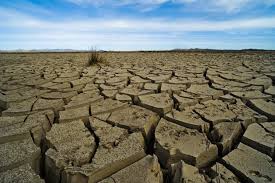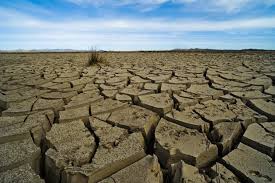
While Land degradation and desertification is now affecting 168 countries around the world according to the UN, there is also hope especially in the efforts that are being undertaken in South Africa.
The solution according to the international not-for-profit organization Living Standards, is to bring together the users and beneficiaries of this water catchment; government, communities and farmers like Kruger. The organization has been doing so since 2008.
This combined effort has resulted in more than 3.7 million trees being planted in South Africa in an effort to try to stop land degradation and restore the degraded water catchment system.
And it is not only the NGOs that have come forward, many corporate also seem to be serious in this effort. For example, in this South African project, the funding has been done by the largest agricultural insurer in South Africa – Santam. While the major job for an agriculture insurance company is to assess the risk of farming, this company is actually trying to reduce the risk thus helping itself as well as the community.
“This is a business imperative for us, the likelihood of our sustainability is highly dependent on this,” said Ray-Ann Sedres, head of integrated sustainability at Santam.
For insurance companies to be able to do well and sustain in a continually warming globe, these types of efforts are necessary, feels Sedres.
For the 1.4 million people in nearby Port Elizabeth who have been suffering under water restrictions off and on since 2007, this is good news.
While increasing water delivery to under-serviced areas, the city has doubled in size since 1997. Combined with climate change these activities have brewed a perfect storm.
In this region, farmers were encouraged and even subsidized in the 20th century farmers to cut water channels into the land to aid runoff and run as many sheep as they could. This resulted in the wiping out of the subtropical thicket - a forest which retained water during periods of low rainfall.
Adding to this, there is erratic rainfall and the changing climate now causes rain to fall in more isolated storms, say South African scientists, which causes even more runoff.
This twin effect is characteristic of degraded lands around the world, says the conservation group IUCN which has been advocating for restorations projects like this.
Everyone who has a stake in the water, the land and the jobs that depend upon it are brought together by this approach. These groups and individuals then begin restoring the landscape, planting trees, creating weirs and funding it through public and private finance gathered from users.
While accepting that their company’s expertise does not lie in planting trees, Sedres says: “the strength of our business does not lie in land rehabilitation, it lies in the fact that we understand risk.”
To help with disaster planning and the communal effort to halt land degradation, municipalities and other partners are using this risk analysis format, says Sedres .
“Santam knows that if we don’t make sure that there is water downstream where business sits, then business stops and business continuity claims arise,” she added.
(Source:www.theguardian.com)
The solution according to the international not-for-profit organization Living Standards, is to bring together the users and beneficiaries of this water catchment; government, communities and farmers like Kruger. The organization has been doing so since 2008.
This combined effort has resulted in more than 3.7 million trees being planted in South Africa in an effort to try to stop land degradation and restore the degraded water catchment system.
And it is not only the NGOs that have come forward, many corporate also seem to be serious in this effort. For example, in this South African project, the funding has been done by the largest agricultural insurer in South Africa – Santam. While the major job for an agriculture insurance company is to assess the risk of farming, this company is actually trying to reduce the risk thus helping itself as well as the community.
“This is a business imperative for us, the likelihood of our sustainability is highly dependent on this,” said Ray-Ann Sedres, head of integrated sustainability at Santam.
For insurance companies to be able to do well and sustain in a continually warming globe, these types of efforts are necessary, feels Sedres.
For the 1.4 million people in nearby Port Elizabeth who have been suffering under water restrictions off and on since 2007, this is good news.
While increasing water delivery to under-serviced areas, the city has doubled in size since 1997. Combined with climate change these activities have brewed a perfect storm.
In this region, farmers were encouraged and even subsidized in the 20th century farmers to cut water channels into the land to aid runoff and run as many sheep as they could. This resulted in the wiping out of the subtropical thicket - a forest which retained water during periods of low rainfall.
Adding to this, there is erratic rainfall and the changing climate now causes rain to fall in more isolated storms, say South African scientists, which causes even more runoff.
This twin effect is characteristic of degraded lands around the world, says the conservation group IUCN which has been advocating for restorations projects like this.
Everyone who has a stake in the water, the land and the jobs that depend upon it are brought together by this approach. These groups and individuals then begin restoring the landscape, planting trees, creating weirs and funding it through public and private finance gathered from users.
While accepting that their company’s expertise does not lie in planting trees, Sedres says: “the strength of our business does not lie in land rehabilitation, it lies in the fact that we understand risk.”
To help with disaster planning and the communal effort to halt land degradation, municipalities and other partners are using this risk analysis format, says Sedres .
“Santam knows that if we don’t make sure that there is water downstream where business sits, then business stops and business continuity claims arise,” she added.
(Source:www.theguardian.com)





